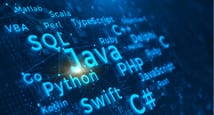- Welcome to the Course!
- Course Overview Lecture
- Preview
- Anaconda Python and Jupyter Install and Setup
- Note on Environment Setup - Please read me!
- Environment Setup
Python for Machine Learning & Data Science Masterclass
Start mastering the critical skills for ML, and data science with the Python for Machine Learning & Data Science ...Read more
Online
₹ 699 4099
Quick Facts
| particular | details | |||
|---|---|---|---|---|
|
Medium of instructions
English
|
Mode of learning
Self study
|
Mode of Delivery
Video and Text Based
|
Course overview
The Python for Machine Learning & Data Science Masterclass is a pretty small certification course that is designed by Udemy. This course will teach Python along with tools like Pandas, Numpy, Scikit-Learn, Matplotlib, and more. The certificate has a very high rating of 4.7 stars out of 5. This course is made ready for students who already know a little bit of Python but are definitely ready to dive deeper to get accustomed to the skills of Python for Data Science and Machine Learning.
With the Python for Machine Learning & Data Science Masterclass training, the participants can be working in the largest tech companies as data scientists. They get trained in such ways that they turn out to be extremely hirable, and favourable candidates in today's workplace environment. Designed to be delivered both in-person, this course is balanced shuffling between the practical, and real-world case studies with the theory of mathematics.
The highlights
- 44 hours video sessions
- Full lifetime access
- 33 resources are downloadable
- Accessible on mobile and tablet
- Certificate of completion
- 30-day guarantee of money back
Program offerings
- 44 hours video
- 33 downloadable sections
- 6 articles
- Free lifetime course access
- Content completion certificate
- 4 coding exercises
Course and certificate fees
Fees information
Python for Machine Learning & Data Science Masterclass certification fee is Rs. 4099.
Python for Machine Learning & Data Science Masterclass Fee Structure
| Head | Amount |
| Original Price | Rs. 4099 |
| Discounted Price | Rs. 699 |
certificate availability
Yes
certificate providing authority
Udemy
Who it is for
- The ideal students are the Python Developers who are at their beginner level but are curious to dig about the advanced concepts in Data Science with Python, and Machine Learning with Python.
Eligibility criteria
Certification Qualifying Details
Python for Machine Learning & Data Science Masterclass certification by Udemy will be provided only when all the articles will be read, videos will be watched, and the coding exercises will be completed.
What you will learn
With the Python for Machine Learning & Data Science Masterclass certification syllabus, here is what all the aspirants will learn:
- Candidates will understand both data science concepts and machine learning from scratch.
- The participants will be understanding real-world situations to replicate them into data reports.
- The candidates will learn NumPy for numerically processing Python.
- Learners will be conducting feature engineering pertaining to real-world case scenarios.
- Data manipulation can be conducted by using Panda for python.
- For predicting classes, the candidates can make up machine learning algorithms.
- For creating Python data visualizations candidates will learn Matplotlib.
- The candidates will be learning regression algorithms related to machine learning.
- It shall be possible to understand the complete production workflow for the lifecycle of machine learning.
- The candidates should be able to deploy models of machine learning as API’s that are interactive.
The syllabus
Introduction to the course
OPTIONAL: Python Crash Course
- OPTIONAL: Python Crash Course
- Python Crash Course - Part One
- Python Crash Course - Part Two
- Python Crash Course - Part Three
- Python Crash Course - Exercise Questions
- Python Crash Course - Exercise Solutions
Machine Learning Pathway Overview
Machine Learning Pathway Overview
NumPy
- Introduction to NumPy
- NumPy Arrays
- Coding Exercise Check-in: Creating NumPy Arrays
- NumPy Indexing and Selection
- Coding Exercise Check-in: Selecting Data from Numpy Array
- NumPy Operations
- Check-In: Operations on NumPy Array
- NumPy Exercises
- Numpy Exercises - Solutions
Pandas
- Introduction to Pandas
- Series - Part One
- Check-in: Labeled Index in Pandas Series
- Series - Part Two
- DataFrames - Part One - Creating a DataFrame
- DataFrames - Part Two - Basic Properties
- DataFrames - Part Three - Working with Columns
- DataFrames - Part Four - Working with Rows
- Pandas - Conditional Filtering
- Pandas - Useful Methods - Apply on Single Column
- Pandas - Useful Methods - Apply on Multiple Columns
- Pandas - Useful Methods - Statistical Information and Sorting
- Missing Data - Overview
- Missing Data - Pandas Operations
- GroupBy Operations - Part One
- GroupBy Operations - Part Two - MultiIndex
- Combining DataFrames - Concatenation
- Combining DataFrames - Inner Merge
- Combining DataFrames - Left and Right Merge
- Combining DataFrames - Outer Merge
- Pandas - Text Methods for String Data
- Pandas - Time Methods for Date and Time Data
- Pandas Input and Output - CSV Files
- Pandas Input and Output - HTML Tables
- Pandas Input and Output - Excel Files
- Pandas Input and Output - SQL Databases
- Pandas Pivot Table
- Pandas Project Exercise Overview
- Pandas Project Exercise Solutions
Matplotlib
- Introduction to Matplotlib
- Matplotlib Basics
- Matplotlib - Understanding the Figure Object
- Matplotlib - Implementing Figures and Axes
- Matplotlib - Figure Parameters
- Matplotlib - Suboplots Functionality
- Matplotlib Styling - Legends
- Advanced Matplotlib Commands (Optional)
- Matplotlib Exercise Questions Overview
- Matplotlib Exercise Questions - Solutions
Seaborn Data Visualizations
- Introduction to Seaborn
- Scatterplots with Seaborn
- Distribution Plots - Part One - Understanding Plot Types
- Distribution Plots - Part Two - Coding with Seaborn
- Categorical Plots - Statistics within Categories - Understanding Plot Types
- Categorical Plots - Statistics within Categories - Coding with Seaborn
- Categorical Plots - Distributions within Categories - Understanding Plot Types
- Categorical Plots - Distributions within Categories - Coding with Seaborn
- Seaborn - Comparison Plots - Understanding the Plot Types
- Seaborn - Comparison Plots - Coding with Seaborn
- Seaborn Grid Plots
- Seaborn - Matrix Plots
- Seaborn Plot Exercises Overview
- Seaborn Plot Exercises Solutions
Data Analysis and Visualization Capstone Exercises
- Capstone Projects Overview
- Capstone Project Solutions - Part One
- Capstone Project Solutions - Part Two
- Capstone Project Solutions - Part Three
Machine Learning Concepts Overview
- Introduction to Machine Learning Overview Section
- Why Machine Learning?
- Types of Machine Learning Algorithms
- Supervised Machine Learning Process
- Companion Book - Introduction to Statistical Learning
Linear Regression
- Introduction to Linear Regression Section
- Linear Regression - Algorithm History
- Linear Regression - Understanding Ordinary Least Squares
- Linear Regression - Cost Functions
- Linear Regression - Gradient Descent
- Python coding Simple Linear Regression
- Overview of Scikit-Learn and Python
- Linear Regression - Scikit-Learn Train Test Split
- Linear Regression - Scikit-Learn Performance Evaluation - Regression
- Linear Regression - Residual Plots
- Linear Regression - Model Deployment and Coefficient Interpretation
- Polynomial Regression - Theory and Motivation
- Polynomial Regression - Creating Polynomial Features
- Polynomial Regression - Training and Evaluation
- Bias Variance Trade-Off
- Polynomial Regression - Choosing Degree of Polynomial
- Polynomial Regression - Model Deployment
- Regularization Overview
- Feature Scaling
- Introduction to Cross-Validation
- Regularization Data Setup
- L2 Regularization - Ridge Regression - Python Implementation
- L1 Regularization - Lasso Regression - Background and Implementation
- L1 and L2 Regularization - Elastic Net
- Linear Regression Project - Data Overview
Feature Engineering & Data Preparation
- A note from Jose on Feature Engineering and Data Preparation
- Introduction to Feature Engineering and Data Preparation
- Dealing with Outliers
- Dealing with Missing Data: Part One - Evaluation of Missing Data
- Dealing with Missing Data: Part Two - Filling or Dropping data based on Rows
- Dealing with Missing Data: Part 3 - Fixing data based on Columns
- Dealing with Categorical Data - Encoding Options
Cross Validations, Grid Search, And the Linear Regression Project
- Section Overview and Introduction
- Cross-Validation - Test | Train Split
- Cross-Validation - Test | Validation | Train Split
- Cross-Validation - cross_val_score
- Cross-Validation - cross_validate
- Grid Search
- Linear Regression Project Overview
- Linear Regression Project - Solutions
Logistic Regression
- Early Bird Note on Downloading .zip for Logistic Regression Notes
- Introduction to Logistic Regression Section
- Logistic Regression - Theory and Intuition - Part One: The Logistic Function
- Logistic Regression - Theory and Intuition - Part Two: Linear to Logistic
- Logistic Regression - Theory and Intuition - Linear to Logistic Math
- Logistic Regression - Theory and Intuition - Best fit with Maximum Likelihood
- Logistic Regression with Scikit-Learn - Part One - EDA
- Logistic Regression with Scikit-Learn - Part Two - Model Training
- Classification Metrics - Confusion Matrix and Accuracy
- Classification Metrics - Precision, Recall, F1-Score
- Classification Metrics - ROC Curves
- Logistic Regression with Scikit-Learn - Part Three - Performance Evaluation
- Multi-Class Classification with Logistic Regression - Part One - Data and EDA
- Multi-Class Classification with Logistic Regression - Part Two - Model
- Logistic Regression Exercise Project Overview
- Logistic Regression Project Exercise - Solutions
KNN - K Nearest Neighbours
- Introduction to KNN Section
- KNN Classification - Theory and Intuition
- KNN Coding with Python - Part One
- KNN Coding with Python - Part Two - Choosing K
- KNN Classification Project Exercise Overview
- KNN Classification Project Exercise Solutions
Support Vector Machines
- Introduction to Support Vector Machines
- History of Support Vector Machines
- SVM - Theory and Intuition - Hyperplanes and Margins
- SVM - Theory and Intuition - Kernel Intuition
- SVM - Theory and Intuition - Kernel Trick and Mathematics
- SVM with Scikit-Learn and Python - Classification Part One
- SVM with Scikit-Learn and Python - Classification Part Two
- SVM with Scikit-Learn and Python - Regression Tasks
- Support Vector Machine Project Overview
- Support Vector Machine Project Solutions
Tree Based Methods: Decision Tree Learning
- Introduction to Tree-Based Methods
- Decision Tree - History
- Decision Tree - Terminology
- Decision Tree - Understanding Gini Impurity
- Constructing Decision Trees with Gini Impurity - Part One
- Constructing Decision Trees with Gini Impurity - Part Two
- Coding Decision Trees - Part One - The Data
- Coding Decision Trees - Part Two -Creating the Model
Random Forest
- Introduction to Random Forests Section
- Random Forests - History and Motivation
- Random Forests - Key Hyperparameters
- Random Forests - Number of Estimators and Features in Subsets
- Random Forests - Bootstrapping and Out-of-Bag Error
- Coding Classification with Random Forest Classifier - Part One
- Coding Classification with Random Forest Classifier - Part Two
- Coding Regression with Random Forest Regressor - Part One - Data
- Coding Regression with Random Forest Regressor - Part Two - Basic Models
- Coding Regression with Random Forest Regressor - Part Three - Polynomials
- Coding Regression with Random Forest Regressor - Part Four - Advanced Models
Boosting Methods
- Introduction to Boosting Section
- Boosting Methods - Motivation and History
- AdaBoost Theory and Intuition
- AdaBoost Coding Part One - The Data
- AdaBoost Coding Part Two - The Model
- Gradient Boosting Theory
- Gradient Boosting Coding Walkthrough
Supervised Learning Capstone Project - Cohort Analysis And Tree Based Methods
- Introduction to Supervised Learning Capstone Project
- Solution Walkthrough - Supervised Learning Project - Data and EDA
- Solution Walkthrough - Supervised Learning Project - Cohort Analysis
- Solution Walkthrough - Supervised Learning Project - Tree Models
Naive Bayes Classification and Natural Language Processing
- Introduction to NLP and Naive Bayes Section
- Naive Bayes Algorithm - Part One - Bayes Theorem
- Naive Bayes Algorithm - Part Two - Model Algorithm
- Feature Extraction from Text - Part One - Theory and Intuition
- Feature Extraction from Text - Coding Count Vectorization Manually
- Feature Extraction from Text - Coding with Scikit-Learn
- Natural Language Processing - Classification of Text - Part One
- Natural Language Processing - Classification of Text - Part Two
- Text Classification Project Exercise Overview
- Text Classification Project Exercise Solutions
Unsupervised Learning
Unsupervised Learning Overview
K-Means Clustering
- Introduction to K-Means Clustering Section
- Clustering General Overview
- K-Means Clustering Theory
- K-Means Clustering - Coding Part One
- K-Means Clustering Coding Part Two
- K-Means Clustering Coding Part Three
- K-Means Color Quantization - Part One
- K-Means Color Quantization - Part Two
- K-Means Clustering Exercise Overview
- K-Means Clustering Exercise Solution - Part One
- K-Means Clustering Exercise Solution - Part Two
- K-Means Clustering Exercise Solution - Part Three
Hierarchical Clustering
- Introduction to Hierarchical Clustering
- Hierarchical Clustering - Theory and Intuition
- Hierarchical Clustering - Coding Part One - Data and Visualization
- Hierarchical Clustering - Coding Part Two - Scikit-Learn
DBSCAN - Density-Based spatial clustering of applications with noise
- Introduction to DBSCAN Section
- DBSCAN - Theory and Intuition
- DBSCAN versus K-Means Clustering
- DBSCAN - Hyperparameter Theory
- DBSCAN - Hyperparameter Tuning Methods
- DBSCAN - Outlier Project Exercise Overview
- DBSCAN - Outlier Project Exercise Solutions
PCA - Principal Component Analysis And Manifold Learning
- Introduction to Principal Component Analysis
- PCA Theory and Intuition - Part One
- PCA Theory and Intuition - Part Two
- PCA - Manual Implementation in Python
- PCA - SciKit-Learn
- PCA - Project Exercise Overview
- PCA - Project Exercise Solution
Model Deployment
- Model Deployment Section Overview
- Model Deployment Considerations
- Model Persistence
- Model Deployment as an API - General Overview
- Note on Upcoming Video
- Model API - Creating the Script
- Testing the API
Admission details
Here is the Python for Machine Learning & Data Science Masterclass classes admission process:
Step 1: Visit the official site: https://www.udemy.com/course/python-for-machine-learning-data-science-masterclass/?couponCode=ST9MT71624
Step 2: The next task in step 2 is to find, and clicking any one of the buttons ‘Add to Cart’ or ‘Buy Now’.
Step 3: As the button is clicked upon, the course will be added to the cart.
Step 4: Finally, the students need to make a payment by submitting their emails id’s, and names to get admission.
How it helps
The Python for Machine Learning & Data Science Masterclass certification benefits are:
- Students from this certificate course land up in jobs at tech companies namely McKinsey, Facebook, Google, Asana, Apple, Amazon, and others.
- This certificate course is very cheap as compared to its vast syllabus and other boot camps which charge heftily.
- With this course, candidates get the chance of pursuing learn machine learning, data science, and python.
Instructors
FAQs
Is there any gender biases during the course admission?
Irrespective of being of any gender, the students are allowed admission.
How many sections are there in Python for Machine Learning & Data Science Masterclass online certification?
The number of sections is 26.
Who is the professional course instructor?
Jose Portilla is a professional course instructor.
Will students get their money returned if they are unable to complete the course?
This facility is only given post 30 days of the programme enrolment.
Can the Python for Machine Learning & Data Science Masterclass online course be previewed?
Yes, there is a preview video on the homepage of the course.


 Brochure
Brochure Enquire
Enquire










